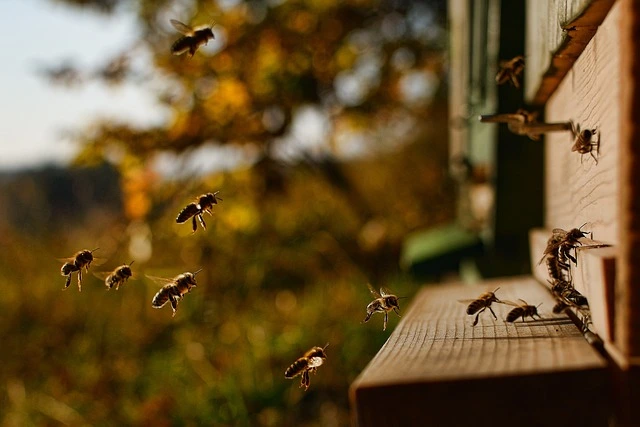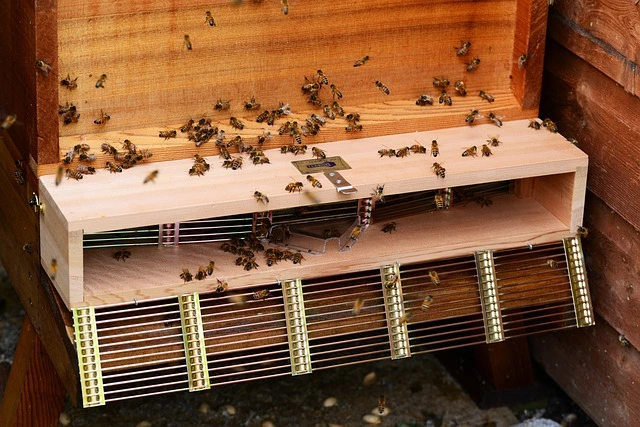Welcome to our blog post on the best wood for bee hives! If you are interested in keeping bees, you first need to choose the right material for your hive. The wood you use can have a huge impact on the health and well-being of your bees. That’s why you must take the time to do your research and choose the best option. In this blog post, we will look at some of the best types of wood you can use to build or repair a hive. We will consider factors like durability, cost, and sustainability to help you make the best decision for your bees. Whether you are a beginner or an experienced beekeeper, we hope you will find this information helpful and informative. Let us dive in!
What to look for when choosing wood for a bee hive?
Look for durable, affordable wood and consider the region you are in. If you have decided to start beekeeping and are considering building your hive, one of the most important decisions you will need to make is the type of lumber to use. As you choose your wood, look at your budget and its resistance to natural elements.

Type of wood for beehives
- Cedar
- Fir
- Premium pine
Best woods for bee hive
Pine
Pine is affordable, easy to work with, and available. There are different grades of pine, meaning you should choose what works better for you (Gardeningchores.com). Standard pine sometimes has knots in it but has a great structure.
Premium pine costs more but is more attractive looking. It does not have knots and has a nice, straight wood grain. There is no need to use toxic paint and hives are wax coated. That is a natural wax to protect it from the elements.
Cedar
The natural oils of cedar wood give it a great smell and protect it from insects and rotting. Cedar wood is attractive and durable. There are different types of cedar, but the popular one is western red cedar.
Cedar is not used as often as pine because of its cost. It is durable wax-coated cedar and designed with dovetail joints for easy setup. A beehive requires one medium box, brood box, frames, and foundation.

Fir
Fir wood has gained its popularity due to stability and non-porous qualities. It has tight, close grain lines meaning the wood is strong and less prone to warping and twisting. There are possibilities to expand or shrink due to exposure to moisture, but fir always returns to its original shape.
The beehive box is fir wood and has a strong, corrosion-resistant ability. You can install all the parts together without any adjustments. The rooftop, entrance reducer, and bottom board of the flow hive frames help keep insects and predators out and secure the hive.
Explain what makes each wood ideal for bee hives
Pine is easy to work with. When it comes to premium pine, the grain of the wood is tighter and straighter, making it nice looking and a defect-free hive. Although pine is not the most durable wood to weather elements, you must protect pine with some coats of outdoor-quality paint, exterior polyurethane, or marine varnish.
Cypress wood produces a sap-type oil that preserves the wood and repels insects and mold. That makes it ideal for beehives and beekeeping equipment. The only drawback you might face is that it is not readily available across the country. It is a beautiful and durable wood for building beehives.
Cedar is a beautiful wood, and it smells divine for bees. The natural oils make it less prone to warping, less susceptible to bug infiltration, and less likely to rot than other woods. You may not even paint it because of its naturally durable qualities. It has varieties depending on where you live.
What wood to use for bee boxes
- Pine
- Cedar
Can you use pressure-treated wood for beehives?
Treat it yourself so that you choose chemicals that hardly affect the bees or your honey. Treating your beehive may be another way that what you eat or what comes out of the hive may be toxic. Sometimes the chemical residue leaches out of the wood in the damp environment of the hive.
Using pressure-treated wood may be another way of exposing bees to chemicals which might not be a good idea. There is a risk of chemicals contaminating the honey, and causing health problems for your bees.
When choosing wood for your beehive, make sure it has great durability and insulin for the hive. That way, you will not need treatment. Wood-like pine makes the most durable beehives. Treat your pine with a bee-friendly oil such as tung or linseed. Wood-like cypress naturally repels water and creates its oil for resistance. Cedar also has some similar properties, but it is not affordable.
Using poplar wood for beehives
Poplar is for deep hive bodies and supers. Its cost is half of the pine. The ends may split unless you predrill holes for box or rabit joints. Air-dry poplar lumbers for at least nine months, or you will have severe shrinkage. They will last for years with no paint.
Poplar does not cost much, which is why most users use it. It is about half the cost of pine, although slightly heavier than pine. For better results, poplar lumber is air-dried for nine months. That way, you also avoid shrinkage.
Using cypress wood for beehives
Cypress is scarce because Cypress trees are in the southern states of the US. It is a swamp lumber with a closed grain and works better in wet and high-humidity regions. The sap is a preservative that minimizes decay and repels insects and mold.
When purchasing Cypress bee boxes, ensure the wood does not contain 30+% of the material as sapwood since it is prone to rot. Old-growth Cypress wood would last decades without treatment, but new-growth lumber only lasts around three years.
Cypress produces a preservative called cypressene which slows down water’s ability to deteriorate the wood and insects (Follen.com). That makes cypress wood popular for any outdoor use, like beehives.
Using cedar for beehives
Painting cedar is not mandatory as it is with pine. Pine is painted to protect it from weather conditions, but a cedar box is durable enough not to deteriorate in the elements. You may treat your cedar hive with natural, plant-based oil, such as tung. Give it time to dry and air out.
Cedar is lighter than pine, making it easy to use on large hives. Cedar is much longer lasting than pine. However, it is not as affordable as pine. That may be covered up due to the durability and longevity of cedar over the years. Splitting can be an issue with cedar. Use kiln-dried cedar to ensure the wood is dried and minimize any splitting.
- Grain and Sheen: Teak Oil versus Danish Oil Uncovered - January 10, 2024
- The Cherry on Top: Crafting the Perfect Cutting Board - January 9, 2024
- Polyurethane Water-Based vs Oil-Based: Choosing the Right Finish - January 8, 2024
